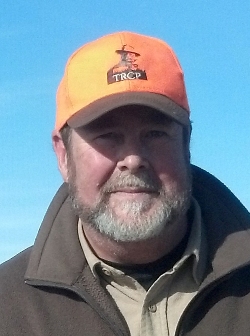While enjoying a frigid Holiday season quail and pheasant hunt near Pratt, Kansas, with friends and colleagues Joe and Lucas Kramer, and NBCI grasslands coordinator Jef Hodges, the critical importance of properly managed center pivot corner habitat for upland birds was clearly evident.
We hunted across a vast agricultural landscape of private land dominated by center pivot irrigation, mostly planted to corn and soybeans. The late season hunt produced many birds, much to our delight and that of our Brittany and Boykin spaniels and chocolate lab. The pivot corners were covered in dense native grasses that held pheasants and corners that were adjacent to farmsteads provided the necessary protective cover for bobwhites. The irrigated ag lands provided the necessary high-energy crop residue that the birds require during cold weather.
These pivot corners exist because of the Habitat Buffers for Upland Birds Conservation Reserve Program (CRP) practice. Originally established by the Farm Service Agency (FSA) in 2004, with the support of NBCI and state agency wildlife professionals, it currently allows enrollment of pivot corners with and without a buffer around a field perimeter. Center pivot corners are now recognized for the valuable habitat they can provide in irrigated farmland regions for the benefit northern bobwhites, prairie-chickens, pheasants, mourning doves, wild turkeys, meadowlarks as well as Monarch butterflies and pollinators, many of which are declining due to widespread habitat loss.
An allocation of 500,000 acres of CRP pivot corners was approved by FSA to benefit wildlife and qualified producers who, in return for enrolling in the program, may receive bonus payments and annual rental payments between 10 and 15 years.
There are many thousands of acres of Habitat Buffers for Upland Birds center pivot corners still eligible for funding by FSA, via the Conservation Reserve Program. This habitat should be on the landscape providing more excellent upland bird hunting opportunities like we enjoyed while in Kansas.
Interested landowners can enroll pivot corners in the continuous Conservation Reserve Program at any time by contacting their local Farm Service Agency office at offices.usda.gov or visit the website at www.fsa.usda.gov/conservation.




